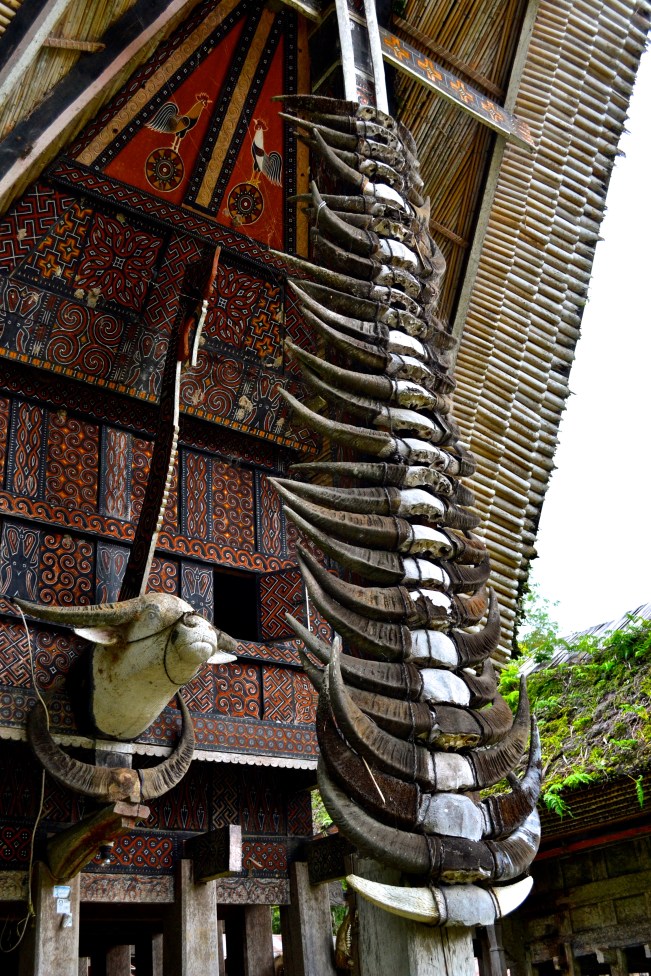
The sweet smell of blood hung in the extremely dense, humid air. Rain fell sporadicly and the next shower was upon us. Sludgy mud welcomed us as we approached the ceremony heavy footed. I felt out-of-place and unsure of what to expect; Funerals aren’t comfortable even when you are invited, so imposing on this one was even stranger. What came next was hard to stomach but absolutely unique in every way.
Tucked away in the highlands of Central Sulawesi is a place so culturally and historically rich that visitors from all over the world come just to witness the tradition of the famed and gruesome funeral ceremonies. Families spend years and thousands of dollars commemorating life and the journey to the afterlife. In order to prepare and save for the ceremony, the family often waits years before affording a proper burial. It’s a monetary and emotional investment. The body resides in the home of the family until being properly laid to rest, and this can take months up to several years until completed. Even more spectacular than the ceremonies, it seems life hasn’t changed much in some of these rural villages over the past 100 years.
Having heard of these intense, gory funeral ceremonies in Toraja peaked my interest and had me quite anxious. I couldn’t shake the feeling of contradiction as the atmosphere of death was juxtaposed by the stunning scenery of lush, tropical forest and green rice fields. According to our guide, this funeral in particular expected 3,000 guests over the course of 4 days, hailing from all around Indonesia. Hundreds of guests were watching, standing around in black garb with accents of gold and other vibrant colors. Some women had bright orange beaded costumes on and were smiling large. Suddenly, the shrill scream of pigs in the distance made my nerves ring, our guide said they knew death was coming for them. What a horrible sound the poor, panic-stricken screaming pigs were making. The most astonishing sound came from the pigs. Everywhere the eye could see, pigs were either lying prostrate on the ground, tied to bamboo or they were viciously struggling, grunting and shrieking the most terrible shriek. The hardest part was watching men stab them in the sides, emotionless and as a matter of fact, hoping their shrieks would die off with them. My first reaction was to turn back, but then I remembered, this was Tana Toraja, the land of glorified funerals and of a completely different outlook on death and the afterlife altogether. I had to experience this, gore and all.
For this particular funeral, the ceremony was larger and more expensive than most. The deceased was a prominent businessman in Papua and it showed. The setup was decadent and impressive. As a gift to the family, guests brought a total of 400 pigs to be slaughtered and offered 100 buffalo, some albino buffalo as much as $40,000 each. Down the stairs and in the middle of a large open field covered with mud and blood, a bamboo platform held several men as they hacked away at buffalo carcasses. Bone, blood and bamboo. The sound was particular and didn’t stop the entire time we were there. With all this meat being cut to pieces, I’m more than positive a large amount went to waste, getting carried away with the rain. Tied to the trees and standing in the rainy mud, six buffalos waited sheepishly for their turn of eventual slaughter, some with spray painted hide belonging to the prominent gift-giving guest. I felt sorry for them. I looked around and it was so chaotic, I’m not sure mourning here would even be possible, but the family and friends chatted cheerfully. Music played and behind us, a circle of men in red swayed and sang “the sad song”, breaking their grasp to welcome me into the circle.
Usually, once the funeral is over, the deceased are laid to rest in a stone grave carved out inside a limestone cliff face or placed in cave tombs. The youngest babies get placed inside special trees to prevent soul stealing thieves from robbing their chances of making it to the afterlife. These thieves believe special magical powers can be procured from a young baby as it soul goes up towards heaven. Needless to say, the death of a loved one is a lengthy experience to endure in Toraja and continues years after the burial ceremony. Ma ‘Nene’ (The Ceremony of Cleaning Corpses) involves removing the box coffin from the tombs (every few years), and the corpses are then removed so they can be cleaned and redressed.


























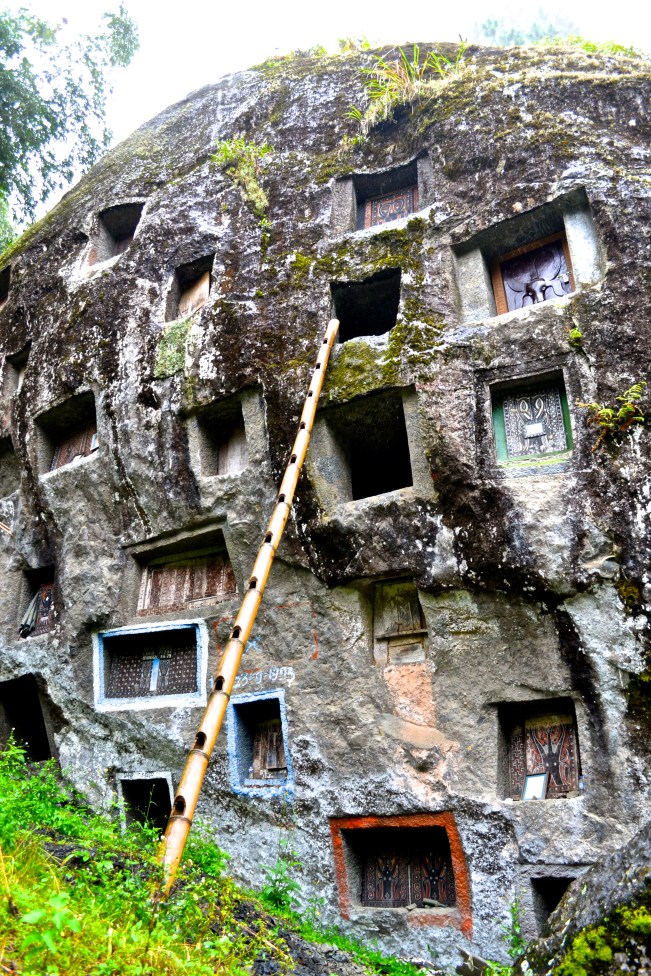






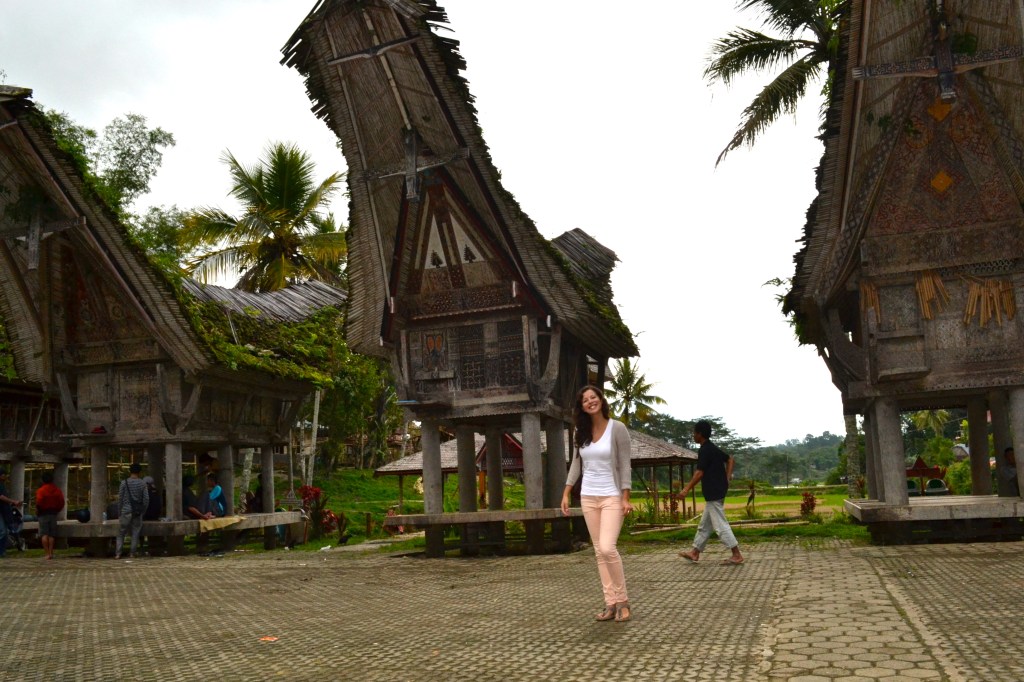
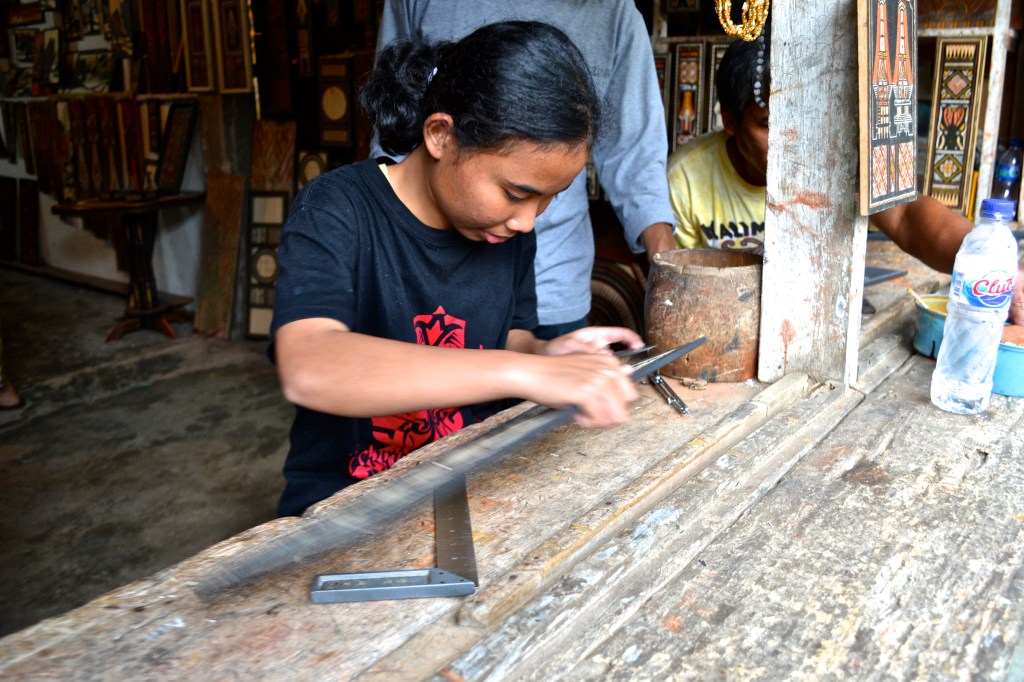









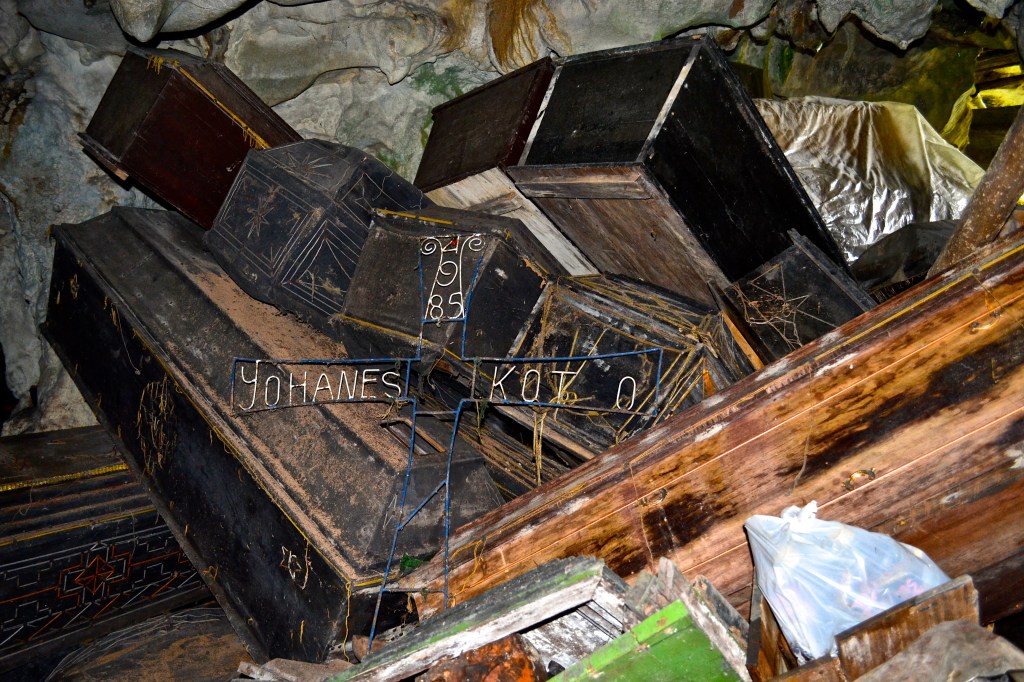


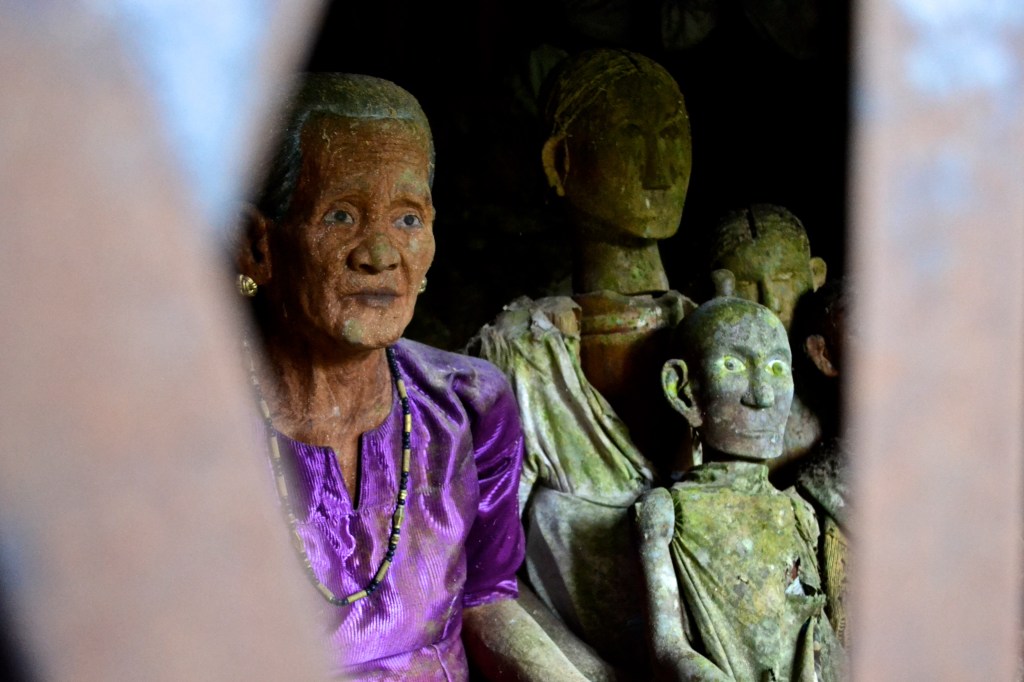

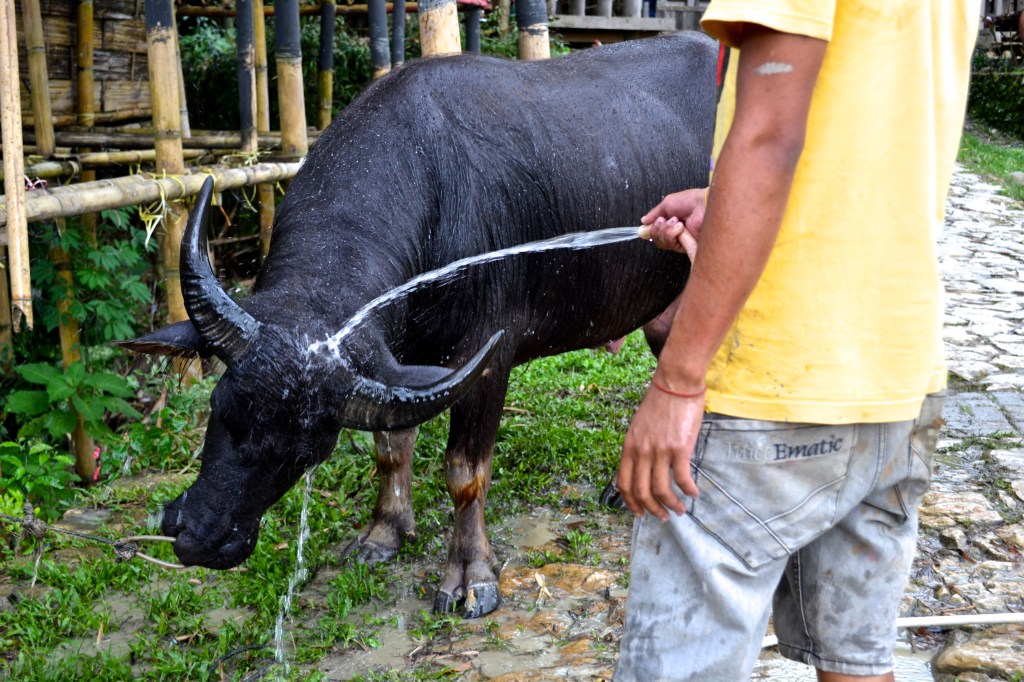












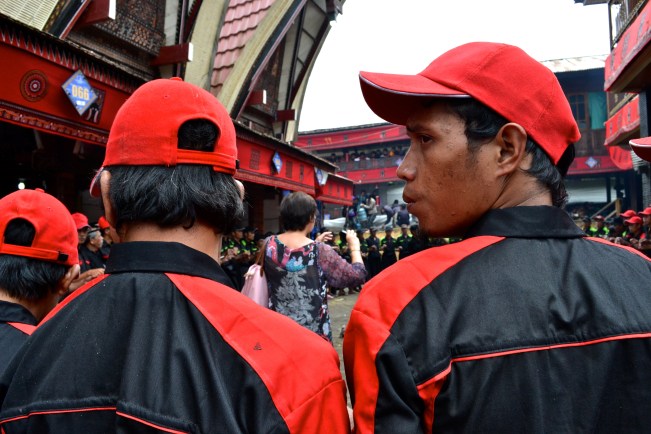

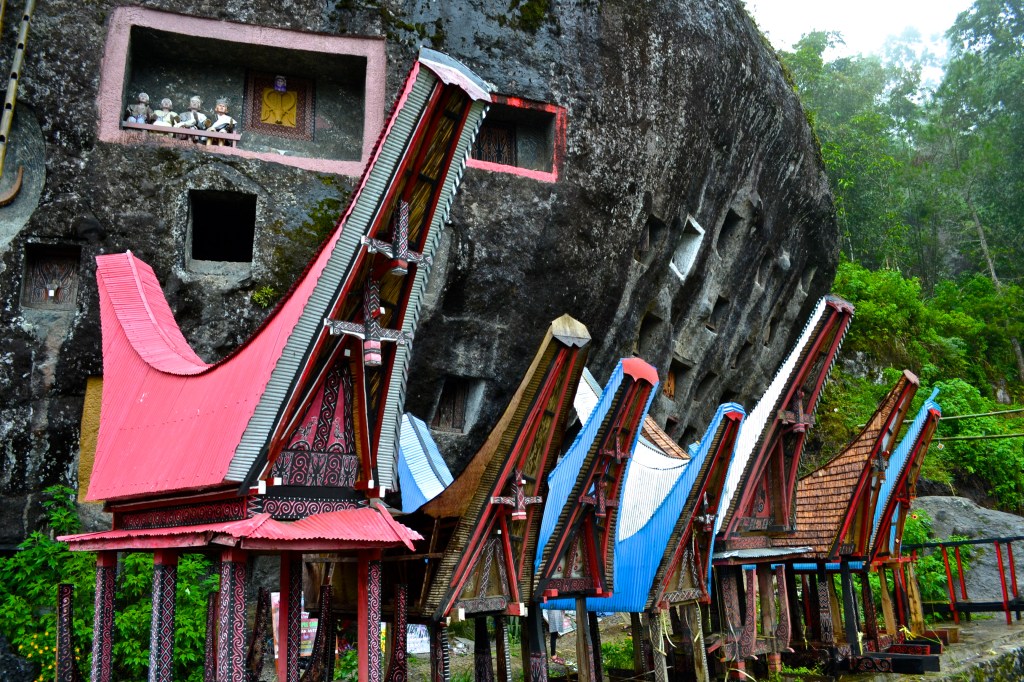















2 responses to “Tana Toraja, Indonesia”
I love all the pictures!
Thanks! Shooting in Toraja was really amazing!